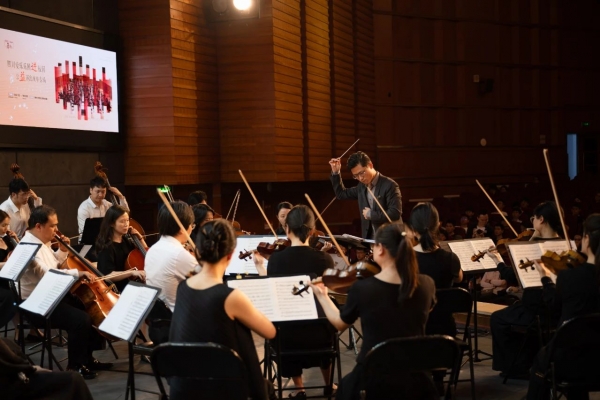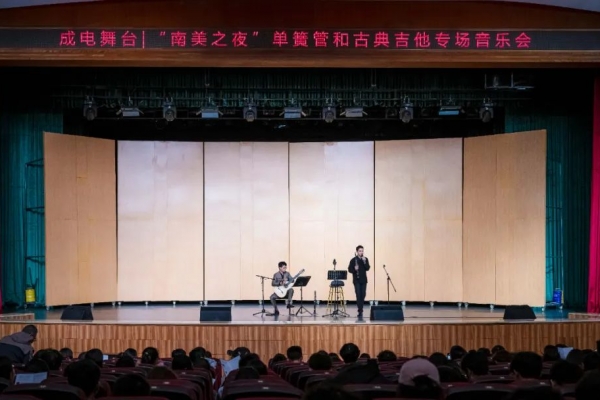即可将网页分享至朋友圈
为搭建我校博士后之间的学术交流平台,促进学术水平提升,学校博士后管理办公室组织开展博士后学术沙龙活动。本次沙龙由我校博士后胡一平、邓邦为、任翱博、李军山、于洋洋、袁黎明分享其研究成果,诚挚邀请感兴趣的师生参加。
一、时 间:2019年11月22日(周五)14:30
二、地 点:沙河校区通信楼818会议室
三、主办单位:电子科技大学博士后管理办公室
承办单位:基础与前沿研究院
三、活动安排:
报告一
(1)主题:Rational electrolyte design for CO2 photo/electroreduction towards multicarbon products
(2)主讲人:邓邦为 基础与前沿研究院博士后
(3)交流内容:
The CO2 electroreduction reaction (CO2RR) to fuels and feedstocks is an attractive route to close the anthropogenic carbon cycle and store renewable energy. The generation of more reduced chemicals, especially multicarbon oxygenate and hydrocarbon products (C2+) with higher energy densities, is highly desirable for industrial applications. However, selective conversion of CO2 to C2+ suffers from a high overpotential, a low reaction rate and low selectivity, and the process is extremely sensitive to the catalyst structure and electrolyte. Here we introduce strategies to achieve high C2+ selectivity through rational design of electrolyte. Additional theoretical insight into the reaction mechanisms underlying the improved C2+ selectivity of specific catalyst geometries and compositions in synergy with a well-chosen electrolyte are also provided.
主讲人简介:
Bangwei Deng received the Ph.D. degree from Chengdu Institute of Organic Chemistry, Chinese Academic of Sciences in 2019. He currently works as a Postdoctoral Fellow in the Institute of Fundamental and Frontier Sciences of UESTC. Dr. Deng is working in the field of photo/electrocatalytic for energy and environment. His main research interests include novel highly efficient, highly selective, green photo/electrocatalytic electrolyte system, and controllable preparation of novel organic-inorganic hybrid nano-photo/electrocatalytic catalysts.
报告二
(1)主题:Quantitative and spatially-resolved evaluation of multiple chloride passivated perovskite solar cells based on generalized optoelectronic reciprocity relations
(2)主讲人:任翱博 基础与前沿研究院博士后
(3)交流内容:
Perovskite solar cells (PSCs) have seen rapid advance in power conversion efficiencies (PCEs). However, the state-of-the-art PSCs still suffer from inhomogeneously distributed nonradiative recombination and carrier transport losses. In this talk, we briefly discuss a promising evaluation strategy which combines the generalized optoelectronic reciprocity theorems and camera-based luminescence imaging, exemplified in triple-cation PSCs.
This talk start from the internal relationships between luminescence emission and the correlated electrical parameters. A detailed proof and discussion of a reciprocity theorem that relates the electron transport to luminescence emission and external luminescence efficiency of nonideal solar cells. The theoretical relations of local luminescence emission, black body radiation and quasi-Fermi level splitting of solar cells are demonstrated rigorously.
主讲人简介:
Aobo Ren received his B.S. and Ph.D. degree from Sichuan University, in 2014 and 2019, respectively. He was a visit student in Research Center for Advanced Science and Technology, University of Tokyo, from 2017 to 2019. He currently works as a Postdoctoral Fellow in Institute of Fundamental and Frontier Science, UESTC. His research interests include spatially-resolved luminescence imaging characterization, 2D material- and perovskite-based optoelectronic devices.
报告三
(1)主题:Ni-based Noble-metal-free Colloidal Nanoparticles for Methanol Oxidation Reaction in Alkaline Media
(2)主讲人:李军山 基础与前沿研究院博士后
(3)交流内容:
Noble metals, such as Pt, Pd, and their based materials, are known as the advanced electrocatalysts for methanol oxidation reaction (MOR) in electrochemical energy conversion process for direct methanol fuel cells (DMFCs). As alternatives, Ni and its based noble-metal-free materials have been investigated for MOR in alkaline media. To this end, we synthesized colloidal (110)-faceted Ni polyhedral nanoparticles (NPs) with an average size of 16 ± 2 nm, which displayed excellent activity. However, monometallic Ni NPs suffered an unsatisfactory activity loss of ca. 30% during the first 10000 s operation in 1.0 M KOH with 1.0 M methanol. To enhance the stability, 3-5 nm NixSn NPs were produced through co-reduction of the two metals in the presence of appropriate surfactants. The most Ni-rich alloy NCs exhibited the highest electrocatalytic activity and the stability was highly improved over periods of 10000 s. Furthermore, the electrode activity of NixSn was largely improved when a small amount of Co was introduced into the structure. Specifically, Ni2.5Co0.5Sn2 NP-based electrodes exhibited extraordinary mass current densities of 1050 mA mg‑1, two times higher than that of Ni3Sn2 electrodes. The excellent performance obtained with the substitution of small amounts of Ni by Co was concomitant to an increase of the surface overage of active species and an enhancement of the diffusivity of the reaction limiting species. Additionally, our latest advance towards MOR on the highly branched Ni3C for the methanol electrooxidation will be presented as well.
主讲人简介:
Junshan Li is now working in the Molecular Electrochemistry group at University of Electronics Science and Technology of China-UESTC as a postdoc researcher in the research line with small molecular electrooxidation under the supervision of Prof. Chunhua Cui. Recently he has completed PhD in Nanoscience in June 2019 from the University of Barcelona under the supervision of Prof. Andreu Cabot at the Catalonia Institute for Energy Research-IREC. After finishing bachelor degree at Southwest University of Science and Technology in June 2010 and master degree in Materials, Energy and Nanotechnology at the University of Oslo under the supervision of Prof. Helmer Fjellvåg and Prof. Anja Olafson Sjåstad in November 2013, he had several years working experience in the field of electronic components in industry.
报告四
(1)主题:Direct Z-scheme Photocatalyst for CO2 Reduction
(2)主讲人:于洋洋 基础与前沿研究院博士后
(3)交流内容:
Recently, the increasing CO2 concentration in the atmosphere due to the ever growing consumption of fossil fuels has caused detrimental environmental pollution. Therefore, humans have to find the ways to reduce CO2 emission and CO2 concentration in the atmosphere. Among various possibilities, photocatalytic CO2 reduction into green solar fuels such as CH4, HCO2H, CH2O, and CH3OH has been known as one of the most promising technologies because it can simultaneously produce useful solar fuels and imitate the CO2 concentration in the atmosphere. Since the pioneering report by Inoue et al. in 1979, various semiconductors have been developed as photocatalysts for effective CO2 reduction. However, among these photocatalysts, wide bandgap semiconductors such as TiO2, ZnO, etc. can only utilize ultraviolet light which occupies 4% of the solar light content, while narrow bandgap semiconductors, such as CdS, CdSe, etc. can utilize visible light with high content in the sunlight, but they do not have high enough redox potential. In addition, the higher electron and hole coincidence rates in the semiconductor also reduce the activity of the catalyst. In order to solve these problems, the researchers combined the two narrow semiconductors into a Z-scheme photocatalyst, which not only increases the utilization range of the light, but also improves the oxidation and reduction potential of the catalyst, and also promotes the separation of the electrons and the holes. We reviewed the application of g-C3N4-based and metal sulfide-based Z-scheme photocatalysts in the field of photocatalytic CO2 reduction, and introduced the formation mechanism of Z-scheme photocatalyst and the mechanism of enhancing photocatalytic performance.
主讲人简介:
Yangyang Yu is a post-doc majored in Materials Science and Engineering. He obtained bachelor’s degree in Chemical Engineering and Technology in Sichuan University, then performed PhD research in Chemical Technology in Sichuan University. During his Ph.D., he mainly modified the surface of TiO2 pigments to enhance their weather resistance, so that they could be widely used in many industrial fields, such as paints, pharmaceuticals, plastics, cosmetics, synthetic fibers, and papermaking
报告五
(1)主题:Mechanism and fabrication method of a THz absorber including oriented spiral particles
(2)主讲人:袁黎明 基础与前沿研究院博士后
(3)交流内容:
Materials with good terahertz absorbing performance have a great application potential in the civil and military field. Because the absorbed ability of conventional materials is poor in terahertz frequency, while terahertz metamaterials have narrow absorbing band and there are some difficulties to design metamaterials for absorbing wideband THz wave. This report introduces a novel THz absorbing material including oriented spiral particles and gives a preliminary discussion on the mechanism and fabrication method of the THz absorber. A theoretical model is investigated to calculate the effective electromagnetic parameters, and a method is proposed to optimize the absorbing property of a multilayer structure. Then the method by employing rotating electric/magnetic field is investigated to control the ordering arrangement of spiral particles in the host medium and finally verify the absorbing performance of the prepared THz absorbing material by experimental measurements. This report aims to promote the theory and technology development for terahertz absorbing materials and make contribution to civil terahertz engineering technology and military terahertz stealth technology.
主讲人简介:
Yuan Liming received bachelor degree form Fudan University in 2008 and Ph.D. degree form Beihang University in 2014. After his Ph.D., he joined Science and Technology on Electromagnetic Scattering Laboratory as engineer and then senior engineer until 2019. He currently works as a postdoctoral in Institute of Fundamental and Frontier Science of UESTC. His research interests mainly focus on design and fabrication of electromagnetic/optical metamaterials.
报告六
(1)主题:Preparation and Electrocatalytic Water Splitting Study of Transition Metal Phosphosulphides
(2)主讲人:胡一平 基础与前沿研究院博士后
(3)交流内容:
In this talk, we briefly discuss the application of pyrite-type transition metal phosphosulphide (TMPS) for electrocatalytic water splitting. There are three issues: (1) size control of TMPS, (2) dopant tuning of TMPS, (3) synergistic multi-dimensional morphology engineering of TMPS.
主讲人简介:
Yiping Hu received the Ph.D. degree from the Lanzhou University in 2019. He currently works as a Postdoctoral Fellow in the Institute of Fundamental and Frontier Sciences of UESTC. Dr. Hu is working in the field of energy conversion and storage. His research focused on the design and construction of nanomaterials, and applying them to Photoelectrocatalysis, Electrocatalysis, and Novel Electrochemical Sensor.
电子科技大学博士后管理办公室
2019年11月20日
编辑:杨棋凌 / 审核:林坤 / 发布:陈伟


